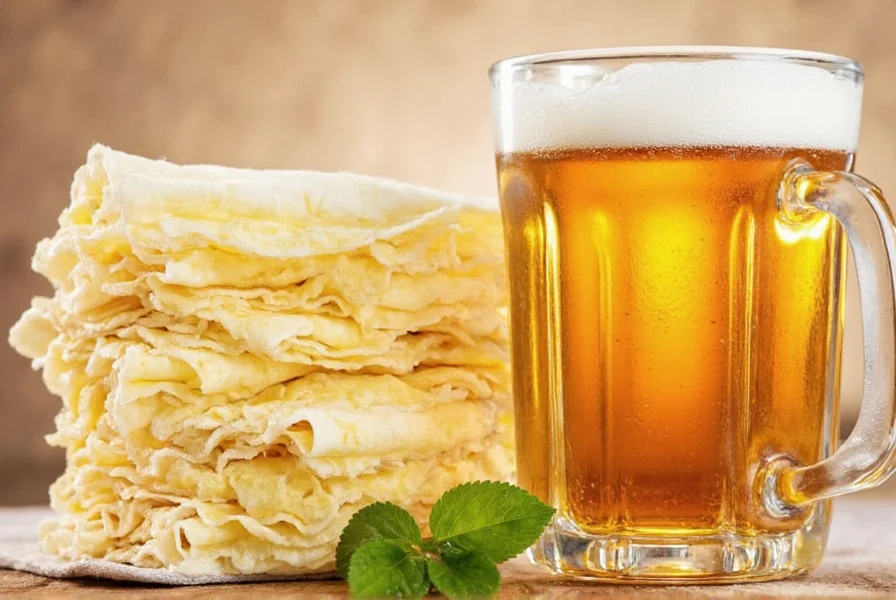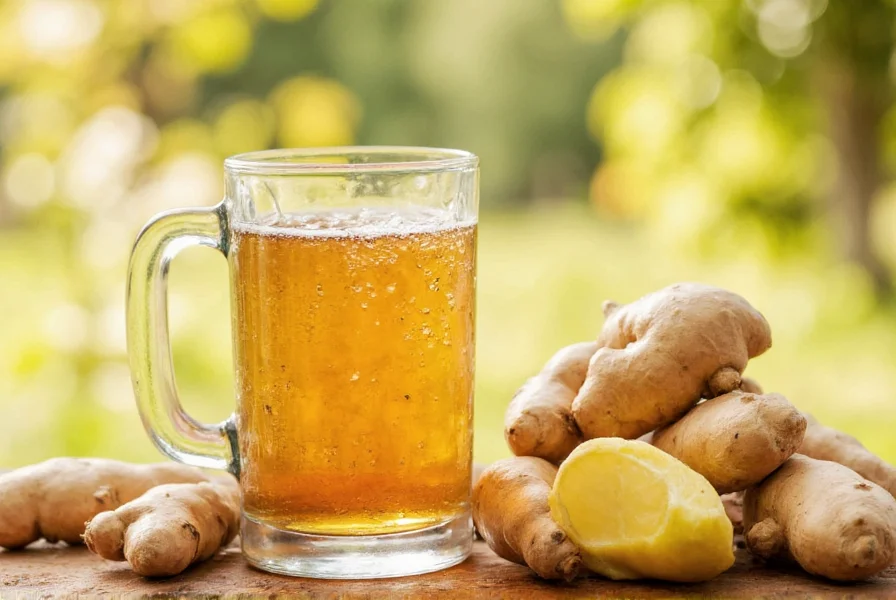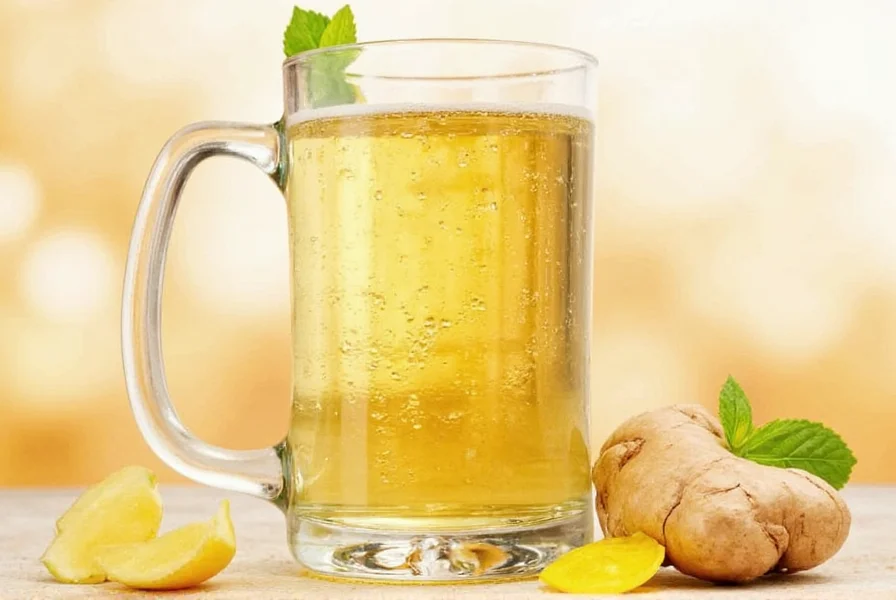When you reach for ginger ale during an upset stomach, you're likely acting on generations of folk wisdom. But does this popular home remedy actually deliver the health benefits many believe it does? The answer requires separating the properties of ginger—the active ingredient—from the commercial product most people drink.
What Exactly Is Ginger Ale?
Ginger ale originated in 19th century Ireland as a fermented beverage made from ginger root, sugar, and water. Today's commercial versions bear little resemblance to these traditional preparations. Most mass-produced ginger ales use ginger flavoring rather than real ginger extract, with some popular brands containing as little as 0.1% actual ginger.
The two main styles you'll find are:
- Dry or Pale Ginger Ale: Lighter flavor, created in Canada, with subtle ginger taste
- Golden Ginger Ale: Darker, spicier version closer to traditional ginger beer
| Product Type | Ginger Content | Sugar Content | Proven Benefits |
|---|---|---|---|
| Traditional Ginger Ale (Commercial) | Very Low (0.1-0.5%) | High (20-30g per 12oz) | Minimal nausea relief (mostly placebo) |
| Ginger Beer (Craft) | Moderate (1-2%) | Moderate (15-25g per 12oz) | Mild digestive benefits |
| Homemade Ginger Tea | High (3-5%) | Low (0-5g) | Significant nausea & digestion relief |
| Ginger Supplements | Very High (standardized 5-10%) | None | Strong evidence for multiple benefits |
Ginger's Proven Health Benefits vs. Ginger Ale's Reality
Ginger root (Zingiber officinale) contains bioactive compounds like gingerols and shogaols that have demonstrated therapeutic effects in numerous clinical studies. Research published in the Journal of the Science of Food and Agriculture confirms ginger's effectiveness for:
- Nausea reduction during pregnancy (morning sickness)
- Motion sickness relief
- Postoperative nausea management
- Digestive support and gut motility improvement
- Mild anti-inflammatory effects
However, these benefits require meaningful ginger concentrations—typically 1-1.5 grams of fresh ginger or equivalent extract. Most commercial ginger ales contain far less than this threshold amount. A 2022 analysis by Consumer Reports found that popular ginger ale brands contained only 0.2-0.4% ginger extract, insufficient for therapeutic effects.

When Might Ginger Ale Actually Help?
Despite its low ginger content, ginger ale may provide some relief in specific situations:
- Carbonation effect: The bubbles may help settle an upset stomach for some people by promoting burping and reducing gastric pressure
- Hydration: When nausea prevents drinking water, the sweet taste may encourage fluid intake
- Placebo effect: Belief in the remedy's effectiveness can trigger real physiological responses
- Mild cases: For very mild nausea, even small amounts of ginger might provide some benefit
However, registered dietitian Dr. Sarah Chen notes, "For significant nausea or digestive issues, you'd need to drink an unrealistic amount of standard ginger ale to get therapeutic ginger levels—likely more than 10 cans, which would introduce dangerous sugar levels."
Better Alternatives for Ginger Benefits
If you're seeking ginger's health properties, consider these more effective options:
- Homemade ginger tea: Steep 1-2 inches of fresh ginger in hot water for 10 minutes
- Ginger chews: Look for products listing ginger root as the first ingredient
- Fresh ginger: Add to smoothies, juices, or meals
- Ginger supplements: Standardized extracts providing 250-500mg gingerols
When choosing commercial products, read labels carefully. Some "craft" or "premium" ginger ales contain higher ginger concentrations. Brands like Reed's Extra Ginger and Bruce's Ginger Juice contain significantly more real ginger than standard options.

Important Considerations and Limitations
While ginger offers benefits, it's not appropriate for all situations:
- Ginger ale's high sugar content (up to 30g per serving) can worsen nausea for some people
- Excessive ginger intake may interact with blood thinners and diabetes medications
- Ginger ale doesn't address underlying causes of persistent nausea or digestive issues
- Pregnant women should consult doctors before using ginger medicinally
For serious or persistent symptoms, ginger ale or even pure ginger shouldn't replace professional medical care. The American College of Gastroenterology recommends seeking medical attention if nausea lasts more than 48 hours or is accompanied by severe pain, fever, or dehydration.
Practical Guidance for Using Ginger Remedies
For those seeking ginger's benefits without commercial ginger ale's limitations:
- Make your own ginger tea using fresh ginger root for maximum potency
- Look for ginger products listing "ginger root" or "ginger extract" high in ingredients
- Consider ginger capsules (250-500mg) for consistent dosing
- For children with upset stomachs, try diluted ginger tea rather than sugary ginger ale
- When traveling, carry ginger chews for motion sickness prevention
Remember that while ginger shows promise for certain conditions, it's not a miracle cure. As with any natural remedy, manage expectations and understand its limitations compared to medical treatments.











 浙公网安备
33010002000092号
浙公网安备
33010002000092号 浙B2-20120091-4
浙B2-20120091-4